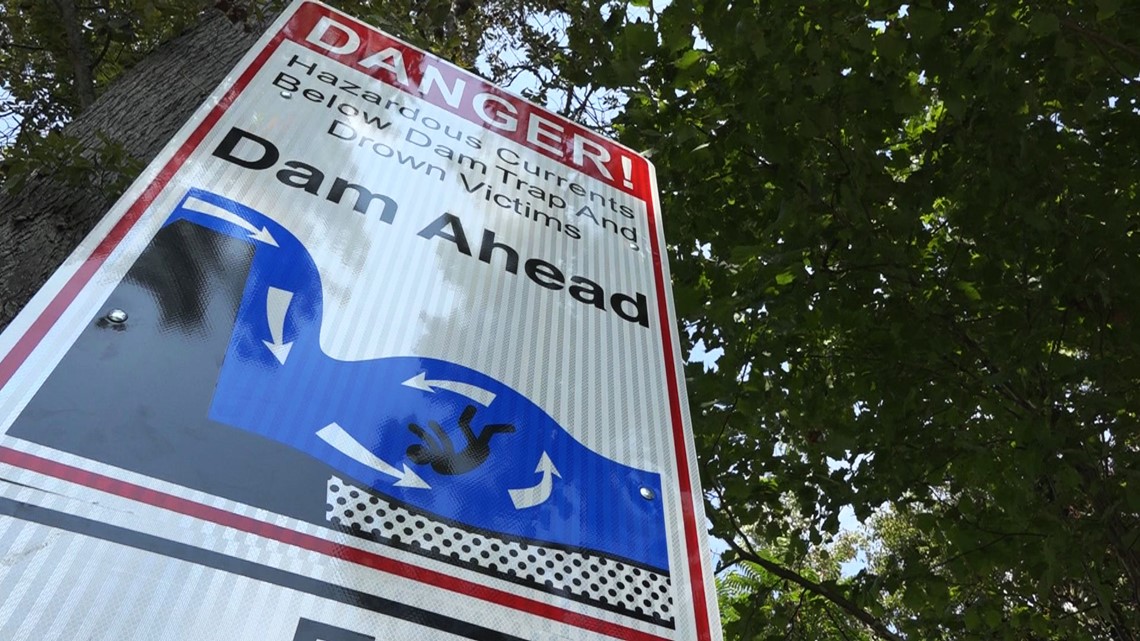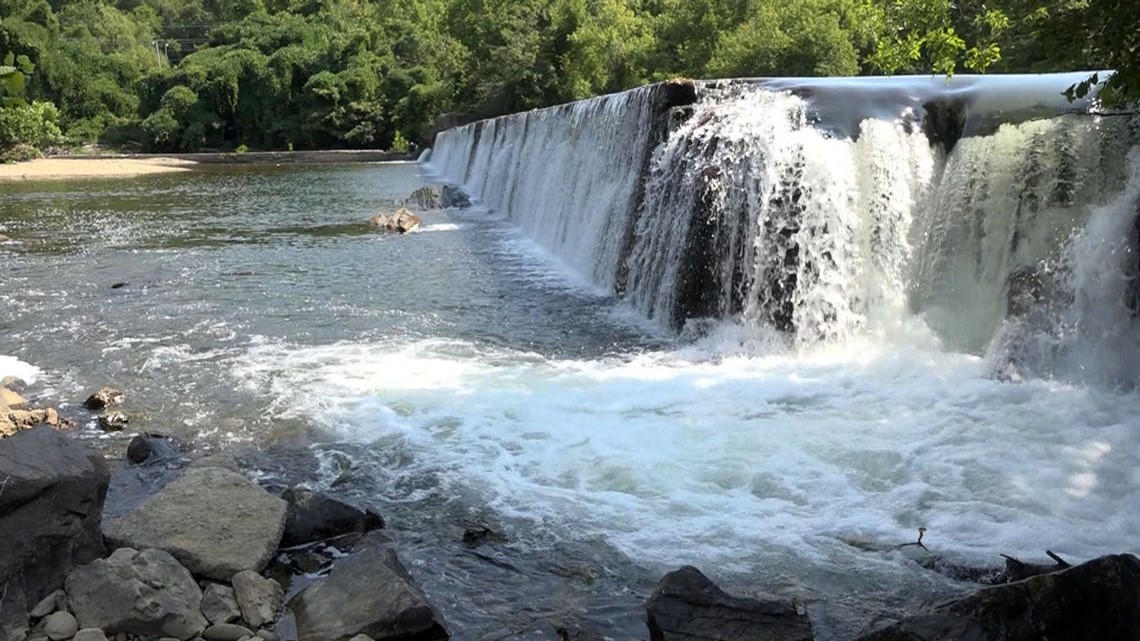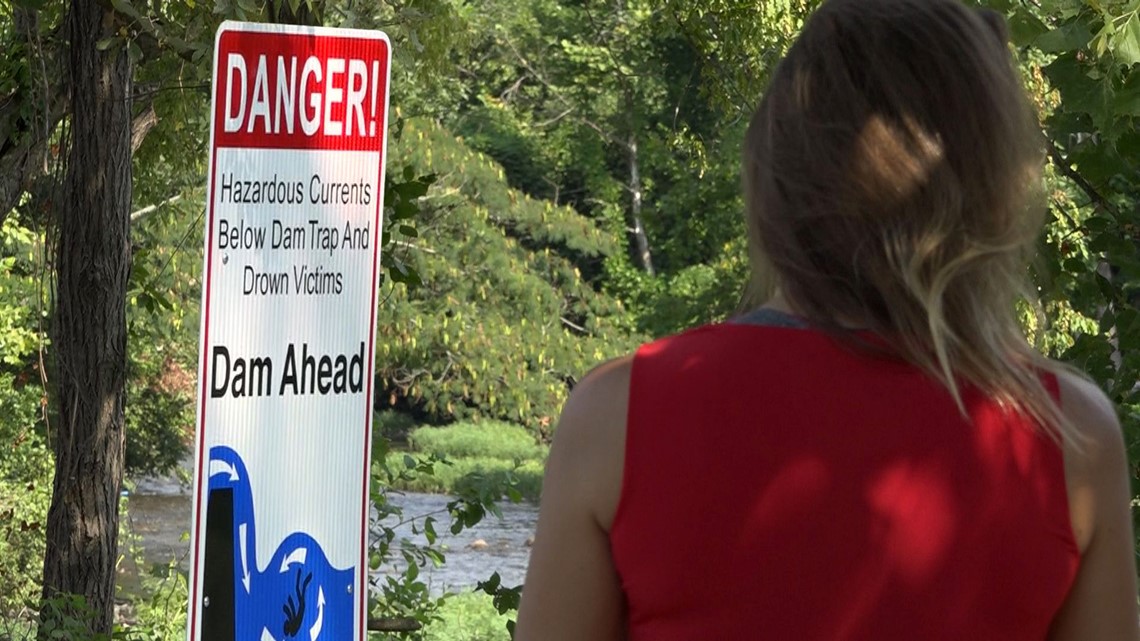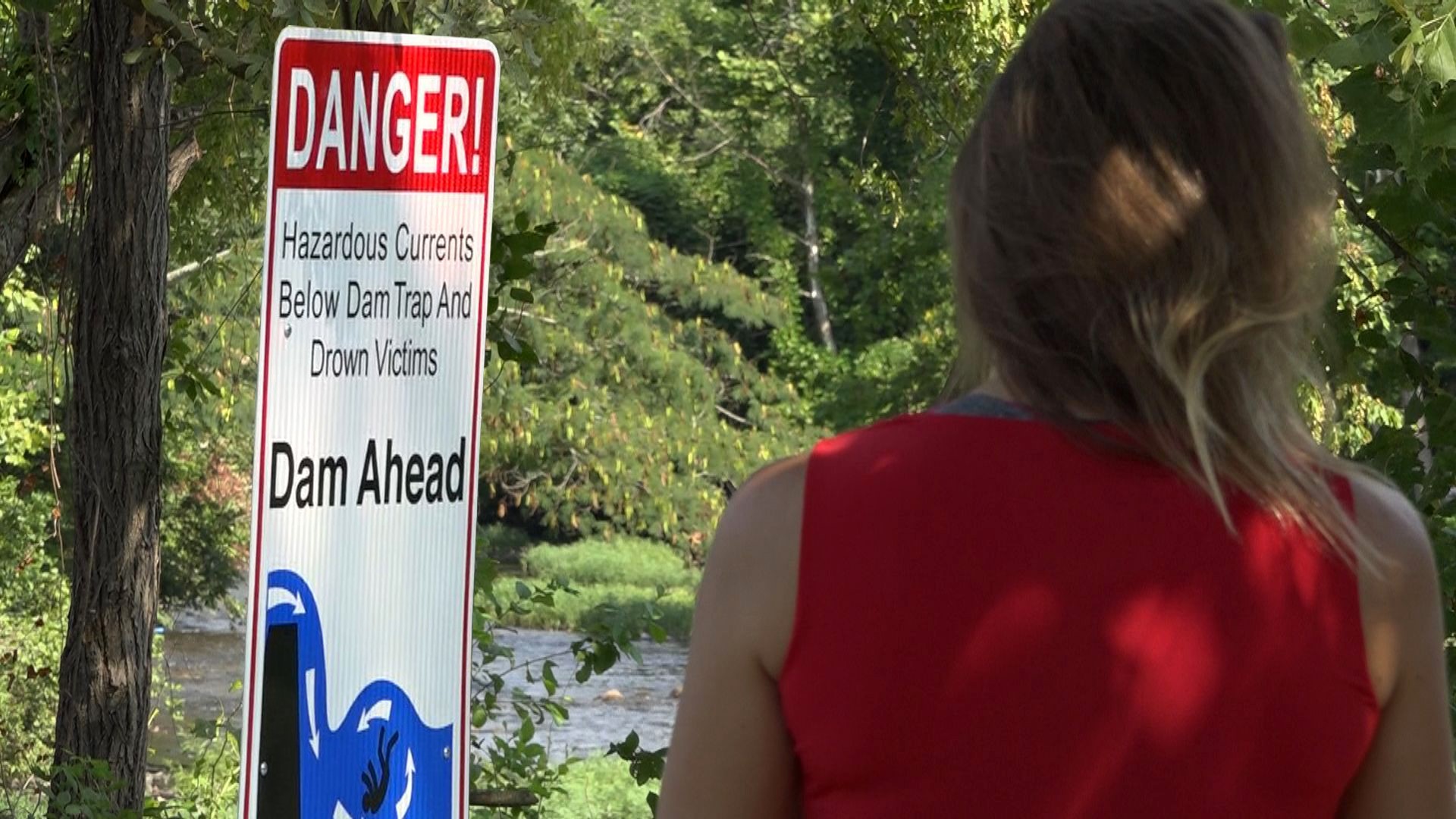WALLAND, Tenn. — Almost three months after 13-year-old Alexis Shirley drowned at Peery's Mill Dam in Blount County, her mourning mother has accomplished a mission to warn others about the deadly currents hiding in the water.
Renee Ritchie pushed for the installation of warning signs to inform swimmers about a dangerous vortex below the dam. The deceptive currents at Peery's Mill Dam and similar dams are known to pull people underwater and trap them.
Wednesday morning, warning signs donated by a company in Ohio were installed in the parking lot beside Peery's Mill Dam by the Tennessee Wildlife Resources Agency.


"I think she [Alexis] would be proud. She was always one to stick up for everyone else. It is for her," said Ritchie. "The sign gives people some kind of idea of what is under the water and a chance to save their own life."
Peery's Mill Dam is a historical landmark on the Little River near Walland. The popular site for swimming and fishing is also where several people have drowned during the last 25 years.
The dam design at Peery's Mill is known as a low-head dam. Safety experts refer to low-head dams as "drowning machines" because they create a vortex that pulls people beneath the water and traps them in a deadly spin-cycle.


Although there have been many drownings in the past, no changes or safety improvements were made to the dam. Changes at the site are complicated by its historic status and unclear ownership.
Technically, nobody owns the dam itself. It is essentially on a state right-of-way. The dam is the only remnant remaining from a mill operation that began in 1842.
The banks of the river have listed property owners, but the river-bottom and dam is not on anyone's deed.


TWRA's responsibilities do not include swimming regulations. But the agency expressed a willingness to post warning signs at the public access site it maintains on the south bank of the river.
In late-July, Ohio-based company Worthington Waterway Barriers donated safety signs for Peery's Mill Dam and sent them to TWRA.
Wednesday morning, TWRA's Tommy Whitehead brought the signs to Peery's Mill and installed them in the sweltering summer heat while Ritchie watched.


"I told him thank you for putting the signs up and I'm sorry it was so hot today," said Ritchie.
"Although we can't enforce swimming and anyone can still come here at their own risk, we can give people notice by putting these signs up. Hopefully, it will prevent similar instances and save lives," said TWRA spokesperson Matt Cameron.
Ritchie said having the signs installed was "a relief." She is especially satisfied with the illustration on the signs.


"That is what I wanted. The picture. The picture is worth more than anything written on there. It explains how the current actually works, how you get stuck in the water, and it's not going to let you go," said Ritchie.
In this case, TWRA was able to assist because it operates the parking lot at the boating access at Peery's Mill. However, it is unable to post signs on private property at other low-head dams across East Tennessee.
"Hopefully, people will at least see and hear about the danger here and know this can happen at any low-head dam," said Ritchie.



